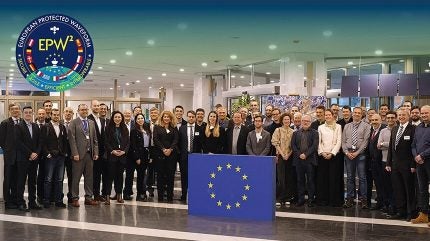
Belgium-based ST Engineering iDirect Europe confirmed that the European Protected Waveform (EPW) project has progressed into its second phase, a step forward in improving secure and independent satellite communications capabilities within Europe.
The advancement is crucial for military operations and government needs, given the increasing complexity of operational environments.
This development, overseen by the Ministry of Defence of Belgium, is spearheaded by ST Engineering iDirect Europe as the head of the consortium.
The project brings together a consortium of 22 organisations from 12 EU Member States comprising experts from industry, government and academia.
The consortium’s objective is to create a robust, end-to-end waveform solution that will bolster resilient and secure communications.
Following the groundwork laid in Phase I, which established the development framework, the EU-funded Phase II will focus on the prototyping and integration of the EPW system.

US Tariffs are shifting - will you react or anticipate?
Don’t let policy changes catch you off guard. Stay proactive with real-time data and expert analysis.
By GlobalDataThe objective is to deliver secure and interoperable systems aligned with broader European strategic goals, including the future Interface Region Imaging Spectrograph (IRIS) satellite constellation and the EU GovSatCom programme.
ST Engineering iDirect Europe EU Programmes vice-president Koen Willems said: “The advancement to EPW Phase II underscores the strategic importance of this initiative to bolster European autonomy in secure satellite communications.
“This recognition by the European Defence Fund demonstrates the urgent necessity to address emerging threats and foster resilience for critical operations across Europe.”
The overall investment in the EPW project has reached €65m, with €35m ($39.7m) allocated to Phase II, building on the €30m invested in Phase I.
Belgian Minister of Defence Theo Francken said: “Together with ST Engineering iDirect Europe, we are investing in the backbone of modern military operations: secure and reliable communication.
“With support from the European Defence Fund, we are advancing technological innovation, strengthening strategic autonomy, and enhancing the safety of our troops. In today’s uncertain world, European cooperation in research and development is not a luxury — it’s an absolute necessity.
“This project aligns perfectly with our broader mission to modernise Defence and deepen European collaboration in R&D.”
The project consortium includes Airbus D&S, Amphinicy, Antwerp Space, Belgian Royal Military Academy, CTG Celestia, Elital, Eutelsat, GISS, Indra, Lasting, Leonardo, LuxGovSat, NeoSat, NLR, OHB, Quadsat, ST Engineering iDirect Europe, Telespazio, Thales Alenia Space and Thales Six.



